Construction Communication: 9 Tips to Bridge the Gap and Improve It
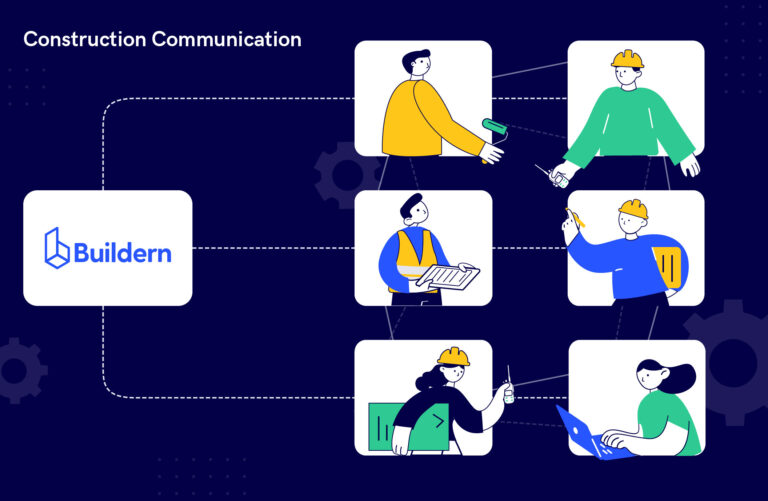
Effective communication can often be the difference between a project that is on time and budget, and one that results in delays and disputes.
In the industry, where precision and coordination are non-negotiable, effective construction communication is more than just a professional skill.
It’s a survival tactic.
Table of Contents
- The Role of Good Communication in Construction
- Parties Involved in Construction Communication
- 9 Effective Construction Communication Strategies and Tips
- Lay Down Clear and Consistent Communication Protocols
- Have Construction-Specific Digital Communication Tools
- Try to Avoid Professional Jargon
- Use Visual Communication Means
- Choose the Right Communication Method to Deliver Your Messages
- Become an Active Listener
- Stick to the Facts
- Motivate Open Communication
- Use Advanced Construction Technology
- The Consequences of Silent Signals
- Conclusion – The Blueprint for Better Construction Communication

The Role of Good Communication in Construction
Recent studies have highlighted that poor communication is a significant culprit in the failure of one in five construction projects. This breakdown in construction communication accounts for a substantial portion of the risks that jeopardize the budgets of these projects. Moreover, due to misunderstandings, only 37% of projects manage to finish on time.
The same studies also show that clear and effective collaboration leads to improved project performance and increased profitability. Thus, a team where every detail is communicated effectively results in over 71% of projects being completed on time and over 80% meeting their initial objectives.
These numbers, stark as they are, underscore the sobering reality that many firms are yet to bridge the communication gap. However, with technology progressing at breakneck speed, there is no excuse for failing to establish a system and stick to it.
That said, prioritizing strong job site communication in the construction industry is the key to client satisfaction and company reputation.
Parties Involved in Construction Communication
Effective construction communication extends to a multitude of stakeholders, each playing a pivotal role in the project’s success. These include:
- Builder and Internal Team: The core team responsible for bringing the project to completion, requires clear communication to maintain alignment on project goals and progress.
- Clients: Essential for establishing and maintaining trust, ensuring that their needs and expectations are met throughout the construction process.
- Subcontractors and Vendors: Their coordination is crucial for timely deliveries and the execution of specialized tasks, impacting the overall project timeline and quality.
Thus, when looking for a platform to cater to each of these stakeholders’ needs, look for more integrated solutions.
For instance, our construction project management platform has incorporated comment and notification features, making it easier for the builder to communicate with all the stakeholders. This facilitates immediate feedback and clarifications, significantly reducing delays caused by miscommunication.
Furthermore, Buildern’s platform enriches this communication ecosystem with specialized tools such as proposals, change orders, purchase orders, daily logs, RFIs (Request for Information), bid requests, and to-dos.
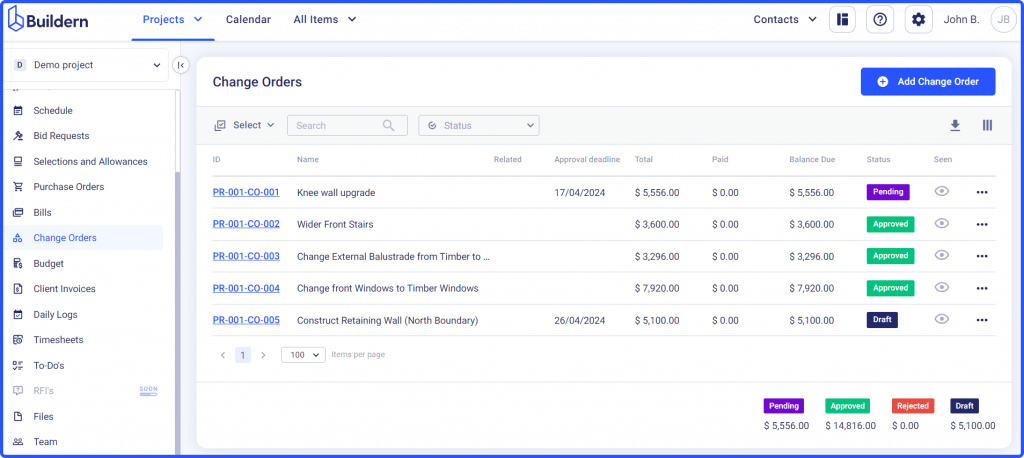
9 Effective Construction Communication Strategies and Tips
We now know that good communication is the backbone of any successful project. It’s the glue that holds everything together, from the initial planning and estimation to the final touches and reporting.
In the upcoming section, we’re going to share 9 essential strategies and tips that can transform the way you communicate with your team, stakeholders, and clients.
❕Disclaimer: Talking louder and more often won’t help here.
1. Lay Down Clear and Consistent Communication Protocols
Your first step should be establishing an internal construction team hierarchy to ensure that all team members, from executives to field workers, understand how to share information, whom to contact for specific issues and the expected timeline for responses.
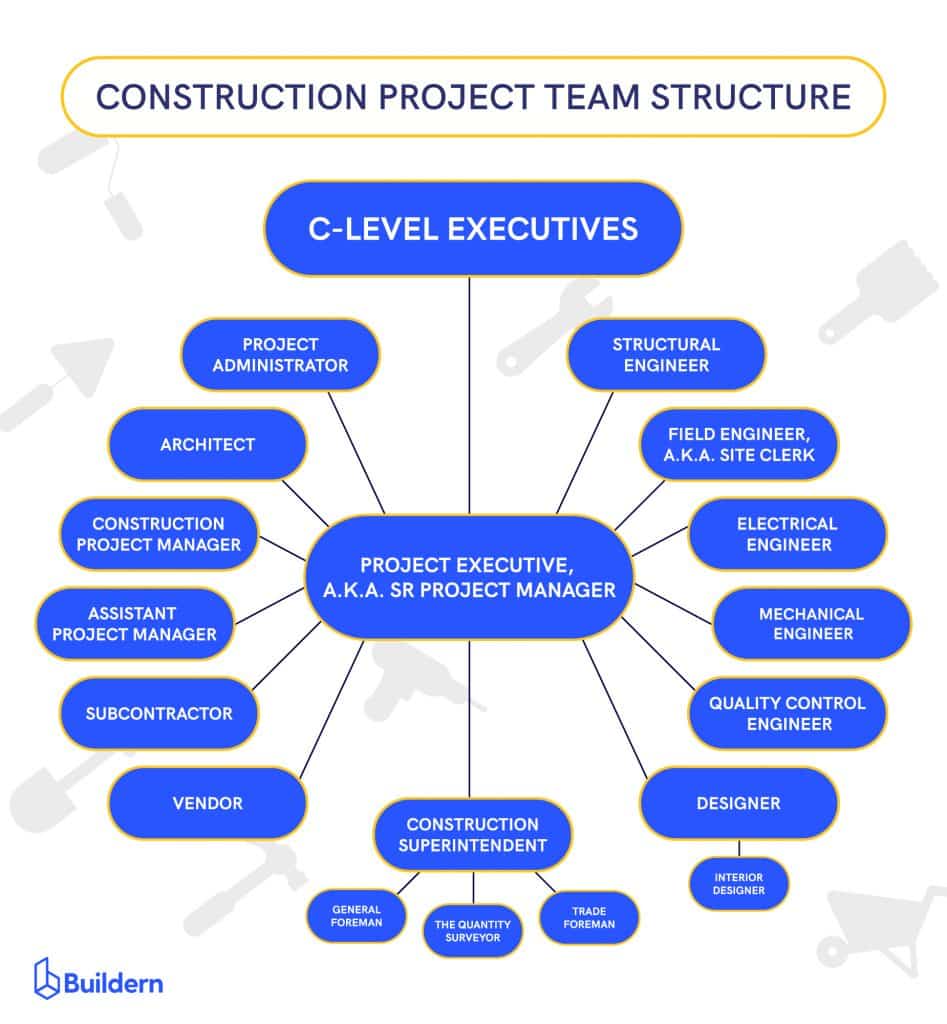
Start by mapping out all project communication needs. Identify key stakeholders and their roles, and then determine the most efficient channels for different types of communication, be it immediate concerns or project updates.
For instance, instant messaging or collaboration platforms may be best for day-to-day interactions, while email or scheduled meetings might be reserved for more substantive updates or decisions. It’s also crucial to establish guidelines for response times, so everyone knows how quickly they should expect an answer.
Using Buildern’s adaptive project management tools will help you set all this up right away.

Regular training and reminders about these protocols will help to maintain consistency and ensure that the entire team is aligned. This approach not only streamlines communication but also builds a culture of transparency and accountability within the construction team.
2. Have Construction-Specific Digital Communication Tools
When every day counts, the need for instant communication remains unchallenged. With the industry flooded with all sorts of construction communication and project management digital tools, choosing one becomes yet another challenge.
And adding another hurdle to your already burning task list is the last thing we want.
That’s why opting for Buildern is the best choice!
As it comes with all-around construction project management and collaboration tools, it will be easier for your team to stay notified with real-time updates without having to switch between different apps.
With Buildern you can instantaneously share files and documents with your team members, assign tasks, share progress milestones with the clients, and so on! You can also set reminders for important deadlines, like when the invoice is due or when a critical task needs to be completed.

This ensures that everyone involved in the project stays on track and no information gets lost along the way.
Moreover, Buildern’s digital tools are specifically designed for construction projects, which means they cater to all the unique needs and challenges of the industry.
So, instead of juggling between multiple apps and struggling to keep up with communication, choose Buildern as your go-to construction project management tool.
3. Try to Avoid Professional Jargon
The construction industry, like many specialized fields, has its own set of construction terminologies and phrases that are second nature to those within the field yet might as well be a foreign language to outsiders.
This specialized vocabulary, while efficient for communication among experts, can create barriers when collaborating with teams from different backgrounds or with clients who may not be familiar with the technical nuances of construction.
For instance, building codes and regulations, construction methods and materials, and even the different stages of project development can be confusing to those who are not familiar with them.
While industry jargon effectively streamlines communication within your company or specific teams, it’s advisable to limit the use of specialized terms when engaging with clients or subcontractors who may not be as familiar with the vernacular. This approach not only ensures clarity but also builds a foundation for mutual understanding and trust.
Misinterpretations due to complex terminology can lead to delays, errors, or dissatisfaction, challenging the project’s progress. Therefore, adopting a more accessible language when discussing project specifics outside of your internal team can significantly enhance collaboration and project success.
4. Use Visual Communication Means
And by visual we mean digital illustrations, diagrams, schematics, pie charts, or anything visual.
As with simplifying construction jargon, incorporating visual aids when communicating construction processes and progress can improve collaboration among team members. Visuals are an effective means of breaking down complex information into easy-to-understand forms, especially for those who are not well-versed in construction terminology.
Moreover, visual aids can enhance and supplement verbal communication, providing a clearer understanding of the project’s scope and progress.
💡Pro Solution
Buildern empowers its users with an intuitive dashboard that offers a visual overview of each project, enhancing financial management and project tracking.
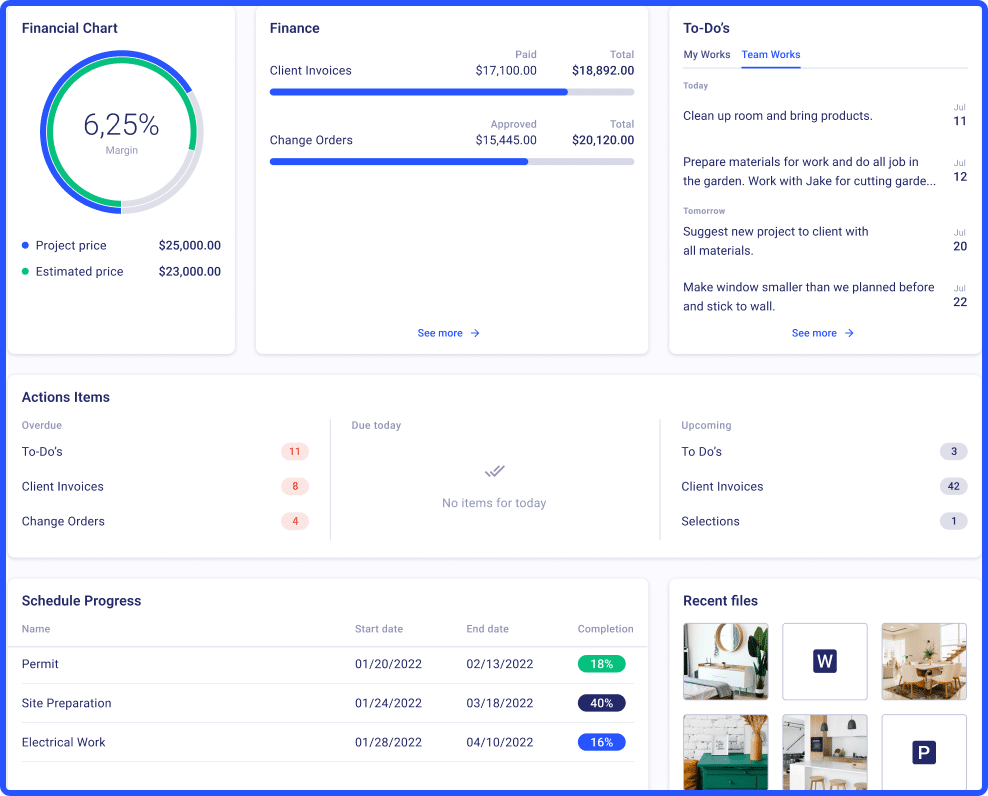
The dashboard includes a circular organization chart that details important financial metrics: project price, estimated cost, expenses, and markup. This granular breakdown allows builders to gain a deeper understanding of their project finances at a glance, facilitating more informed decision-making.
Additionally, Buildern provides real-time insights into project progress through a percentage completion indicator, a project timeline graph, and a weather forecast specific to the project’s location. These features help users in planning and adjusting their schedules efficiently.
Recommended Reading
The overview also consolidates project-related tasks, all the relevant files, and to-do lists, ensuring that everything needed for the successful management of a project is just a click away. This comprehensive approach not only streamlines project management but also enhances the accuracy and effectiveness of communication across teams.

5. Choose the Right Communication Method to Deliver Your Messages
Requests for Information (RFIs), change orders, daily logs, the communication plans for a construction project include a variety of documentation and correspondence.
One effective way to determine the best communication method is by considering who the audience is and what information needs to be conveyed. This will help you choose the corresponding method that will ensure the message is received and understood by all stakeholders.
Each method has its pros and cons. Each should have its unique form and submission guidelines. Ensure all your team members, vendors, and clients know the predetermined procedures.
Following these guidelines not only standardizes the process but also minimizes misunderstandings and delays, facilitating a more cohesive workflow.
Use Buildern to Keep Everything Organized
With Buildern, managing change orders couldn’t be easier or more efficient. Users can create, review, approve, and directly send change orders right from the software. Not only does this streamline the process, but it also provides a visually attractive and straightforward representation.
With details like cost lines, descriptions, deadlines, and even attached visuals, communicating issues becomes clearer and more effective.

On another note, we’re excited to share that our development team is hard at work enhancing the RFI experience. Our goal is to provide the smoothest and most user-friendly tool to our fellow construction professionals.
6. Become an Active Listener
In addition to having the right tools and procedures in place, it is crucial to be an active listener when communicating with stakeholders. Active listening means giving your full attention to the speaker, understanding their perspective, and responding appropriately. This not only helps build rapport but also ensures that all parties are on the same page.
Some tips for active listening include:
- Maintaining eye contact
- Asking clarifying questions
- Paraphrasing and summarizing what was said
- Empathizing with the other person’s perspective.
It is also essential to be aware of non-verbal cues, such as body language and tone of voice. These can give insights into the speaker’s emotions and understanding of the conversation.
By actively listening, you can avoid misunderstandings, resolve conflicts, and build stronger relationships (not only within the team but also with the clients and partners).
7. Stick to the Facts
When it comes to effective communication in construction projects, establishing a clear chain of command is just the beginning.
It’s equally important to select the most effective communication methods tailored to your team’s and project’s needs. Demonstrating your expertise and asserting yourself at the right moments can significantly influence the project’s outcome.
However, it is equally crucial to document and record all communication throughout the project. This approach not only ensures that every decision and change is tracked but also assists in maintaining transparency and accountability among team members.
Plus, if by any chance the company faces unforeseen challenges or legal disputes arise, having a comprehensive documentation system can be life-saving. It serves as an irrefutable record of the decisions made, communications exchanged, and actions taken, safeguarding the company’s interests and providing a clear defense in any legal setting.
But where do you keep all the documented stuff?
This is where having a centralized file library comes into play, acting as a primary data source. A digital repository can drastically reduce the time spent searching for files and ensure that everyone is looking at the most current information.
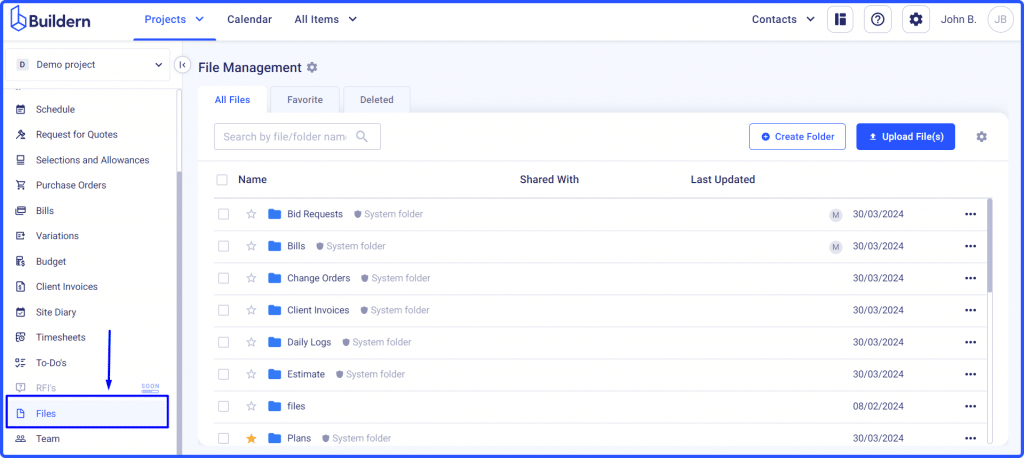
In this regard, we offer yet another robust solution.
Use our file library to store, manage, and share documents.
This reinforces the significance of a unified communication strategy supported by a reliable digital tool like Buildern.
8. Motivate Open Communication
An environment that values and seeks input from all stakeholders breeds a culture of open, honest communication. When team members feel heard and their viewpoints considered, communication barriers break down, and project insights surface.
Here are a few proven tips to seed motivation and mutual trust in your team:
- Don’t expect others to trust you before you’ve earned their trust
- Keep an open mind and be willing to listen to diverse perspectives
- Acknowledge constructive criticism and use it as a learning opportunity
- Encourage questions and seek feedback from all team members
- Resolve conflicts promptly and transparently
- Promote an inclusive environment where everyone feels valued and respected
- Lead by example in promoting open communication and transparency
Having an atmosphere of open communication not only fosters collaboration and creativity but also helps identify potential issues and address them before they escalate into major problems.
9. Use Advanced Construction Technology
New equipment, tools, and software are constantly being introduced in the construction industry to improve efficiency and productivity. In fact, not so long ago the construction technology market was projected to grow beyond $2.7 billion.
As a builder, you will greatly benefit if you stay updated with the latest technology trends and implement them strategically in your projects.
Let’s quickly go through some of the most awesome trends that may also help you improve your team’s communication on the construction site.
Drones
These are increasingly being used in construction to capture aerial footage, which can provide a bird’s-eye view of the project site and progress. This not only helps with communication between team members but also aids in tracking progress, identifying potential issues, and creating accurate 3D models.

VR/AR Solutions
Virtual and augmented reality in construction serves multiple purposes. From accessing and visualizing data to training and safety simulations, these technologies provide a hands-on experience for builders.
Robots and Mechanical Solutions
Robotics refers to the use of robots and autonomous machines in construction. These advanced technologies can assist with various tasks, such as bricklaying, welding, painting, and even demolition.
Building Information Modeling
BIM is gaining traction in the construction sector for its ability to facilitate real-time collaboration, coordination, and visual representations of designs and plans. BIM technology can be viewed as an intelligent tool that goes beyond conventional drawings, allowing builders to create dynamic building models.

Modular Construction
Modular construction is a modern approach where buildings are constructed off-site in segments or modules that are then assembled on-site. This not only reduces construction time but also minimizes disruption to the surrounding community and improves communication between project teams.
In addition to these specific technologies, there are also a variety of software applications that can improve team communication on construction sites. Project management software, document-sharing platforms, and communication channels are also a great support to construction teams.
Having a variety of software solutions to support a construction team’s daily workflow is invaluable. It offers specific tools for addressing unique challenges within the construction process.
However, imagine the efficiency and streamlined communication that could be achieved with an all-in-one platform. Such a platform consolidates the power of individual software solutions, offering a comprehensive suite of tools that covers every aspect of construction management.
This is the case for Buildern users!
It has been designed to enhance team synergy by providing a single, unified system for all project-related activities.
The Consequences of Silent Signals
Be that miscommunication in plans, change orders, or delayed site reports, silent signals can have profound, cascading effects on construction projects.
They lead to increased costs, missed deadlines, and potentially, legal battles. Clear communication thus becomes quite literally a lifeline, with misconstrued directives often resulting in hazardous on-site behavior.
It’s imperative, then, that construction professionals become adept at sending and receiving the right signals.
1. The Risk of Misinterpreted Blueprints
One misplaced measurement, one misread blueprint, and the entire structure of a project can be thrown out of alignment.
Poor drawings and plans are the root cause of many construction delays and budget overruns. This is compounded by the fact that multiple teams – engineering, architecture, carpentry, and so on – often work off separate sets of prints with different levels of information.
To mitigate this risk, it’s important to establish a common understanding between all parties involved in interpreting the blueprints.
💡Pro Solution
Have a single source of truth to keep and manage all your plans. Utilize digital markups for better clarity on specific areas and tasks.
That’s how Buildern users do it.
When a company uses Buildern as its primary construction project management software, the whole team gains access to powerful takeoff tools and a comprehensive file library similar to the hierarchical system of Google Drive. This allows for seamless collaboration on project drawings and blueprints in real time.
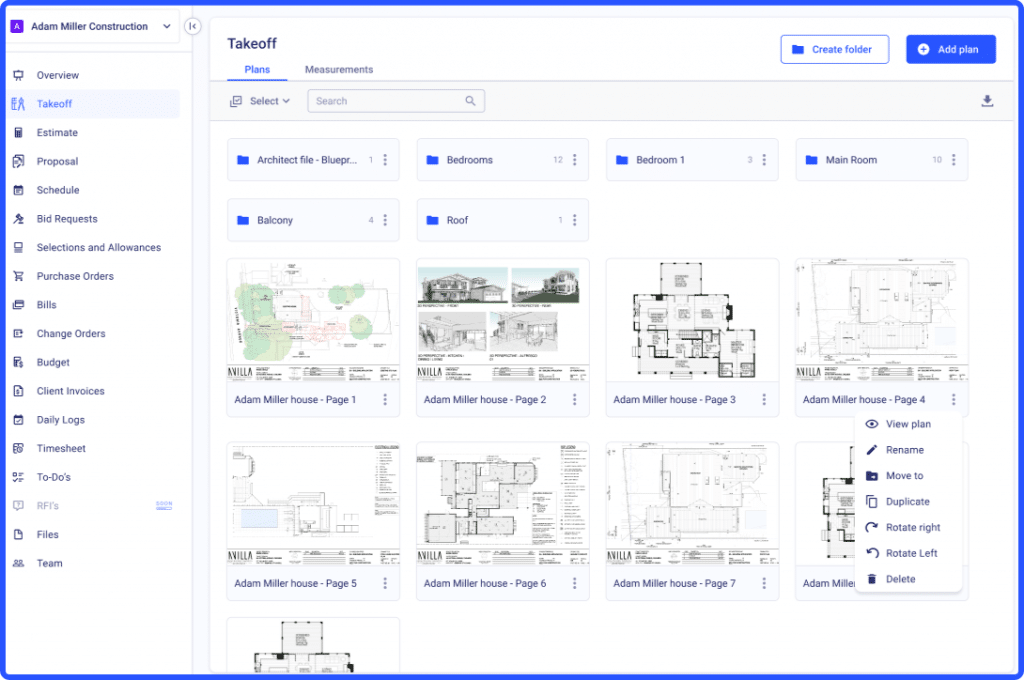
With everything kept in a single place and everyone having the ability to see what others see, communication becomes decidedly clearer and the overall workflow significantly more productive.
As the challenges extend beyond just reading the blueprints, your goal should be to ensure that every stakeholder’s interpretation is as precise as the original intent.
So, takeoffs in Buildern allow users not only to view and interpret blueprints but also to interact with them, making accurate calculations and measurements based on area, length, volume, and more. This functionality is critical for reducing errors in cost estimation and ensuring that material orders are precise, directly impacting the project’s budget and timeline.
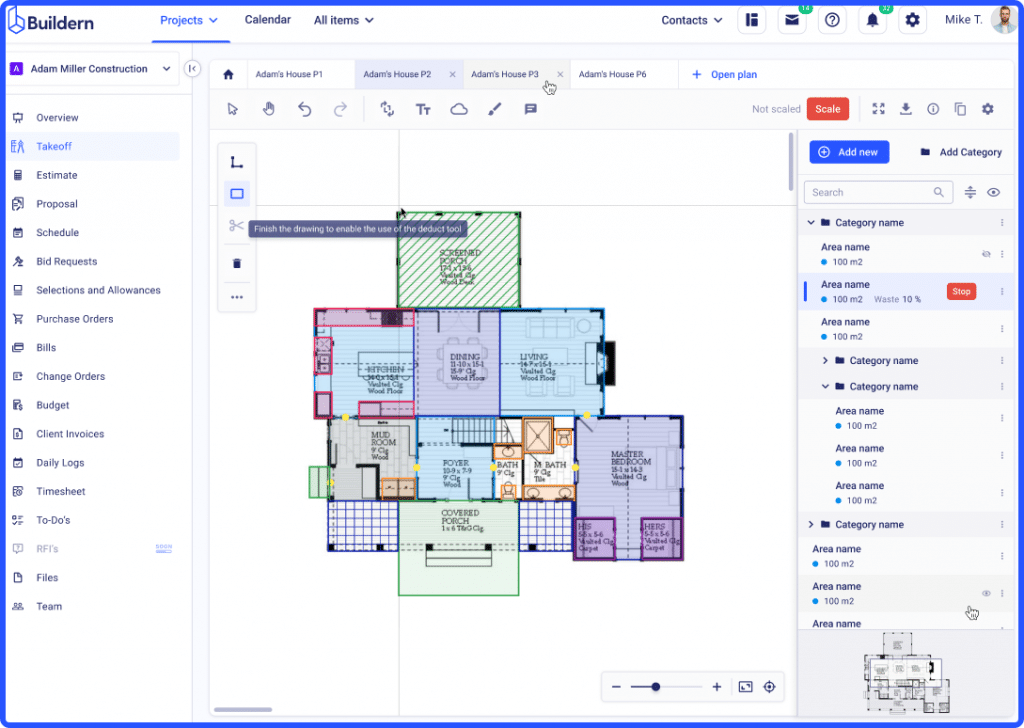
The digital takeoff tools provided by Buildern streamline the once labor-intensive process of manually measuring plans, allowing for quicker adjustments and updates.
As a result, you are left with clear communication, better-allocated resources, and continue your work staging on track.
2. Poor Teamwork Coordination
Imagine a scenario when your team is working with a very tight schedule and every day is accounted for. Suddenly, a discrepancy in the electrical schematics arises, causing confusion among the engineering team and the electricians on site. The electricians can’t proceed without an updated plan, but the engineering team is swamped with other tasks, delaying their response.
This misalignment halts work in critical areas of the project, forcing other teams to pause their tasks, and creating a domino effect. Not only does this scenario push the project behind schedule, but it also strains relationships between team members, increases costs, and potentially threatens future business opportunities due to the damaged reputation for failing to adhere to timelines.
Sounds like a nightmare, doesn’t it?
For teams without a sophisticated system for scheduling, time tracking, and project management, the scenario described above would indeed be a nightmare.
However, for Buildern users, this scenario is far from reality.
Buildern’s advanced construction project management and team collaboration features are designed to preempt and solve such problems. You can synchronize tasks and to-dos, schedules, and personnel within a single tool, ensuring seamless organization and communication from the project’s inception to completion.
Use the scheduling tools and create four types of dependencies and hierarchies, showing critical paths. This, in turn, will provide a comprehensive view of the project’s progress and facilitate timely adjustments.
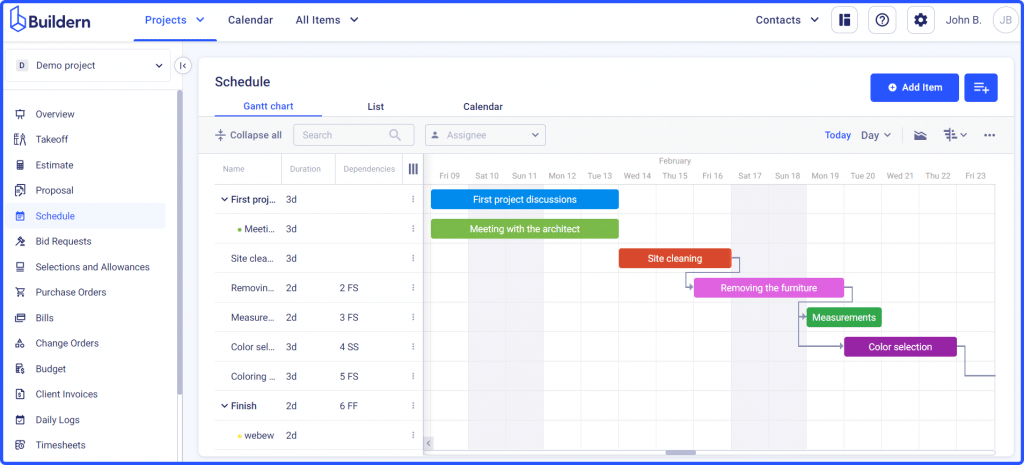
Such a level of organization and visibility means that Buildern users can keep everything on track, ensuring that no part of the project becomes a ticking time bomb.
You can also use the platform’s flexible functionality allowing you to set reminders to specific tasks and receive notifications when deadlines are approaching.
The complexity of coordination in construction cannot be overstated. It involves orchestrating a team that often spans architects, engineers, field workers, subcontractors, and various other stakeholders.
Thus, using Buildern to record all tasks, manage schedules, and keep track of timesheets, will help each group operate on its own schedule. However, if anything changes in project priorities, adjusting the schedule accordingly is a matter of a few simple clicks with Buildern.
Conclusion – The Blueprint for Better Construction Communication
As we lay the foundation for tomorrow, our commitment to clear, consistent communication remains a top priority.
Buildern stands ready to revolutionize your team’s workflow, making every project smoother and more integrated.
Why not take the first step toward seamless construction project management?
Sign up for a free trial or schedule a free demo with us today, and experience the difference with no strings attached.



